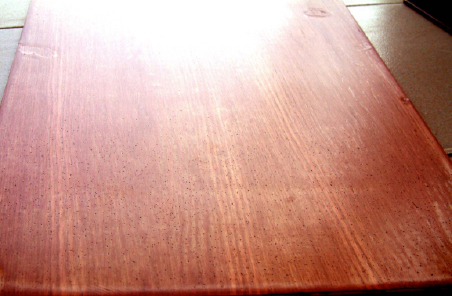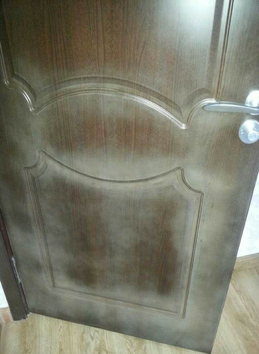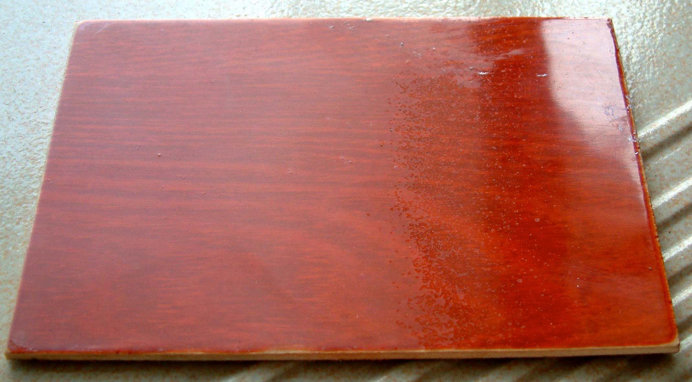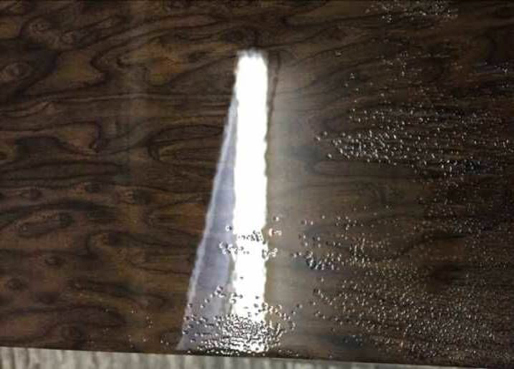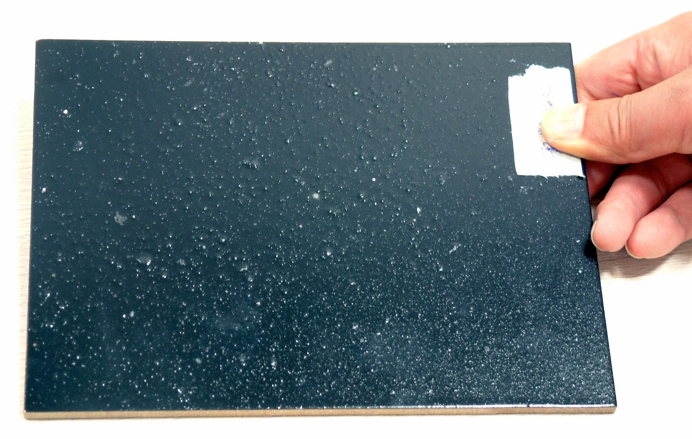Comprehensive precautions for furniture coating application faults in hot summer
When the application environment temperature is 30-35℃ or higher, with frequent high-temperature weather, the paint film will dry too quick and a series of application problems may appear, like whitening, blistering, orange peel, short curing period, uneven gloss, dulling, ran oil and poor adhesion. Therefore, corresponding precautions and solutions in terms of fault reasons in environment, substrate, application and coating products are given for reference in order to avoid these faults effectively and obtain the best paint film effect, thus to improve productivity, reduce cost and improve quality and efficiency.
I. Drying too quickly
| Phenomenon: During the use of paint film, the solvent volatilizes too quickly, resulting in too short pot life and application performance defects of the products. | ||
| Factors | Reasons | Countermeasures |
| Environment | 1. The temperature is too high and the humidity is too low (especially water-based paint). | 1. Do not apply coating in high-temperature, or add isophorone. |
| Application | 2. The thinner dries too quickly or products designed for winter are used in summer. | 2. Use the matching thinner provided by the manufacturer and mix at the required ratio or add a little more. |
| 3. One-time coat is too thin. | 3. Control the thickness of paint film during application. | |
| 4. During spraying application, the ratio of gas and oil is unbalanced. | 4. Pay attention to the operation control during spraying application. | |
| 5. Adding too much curing agent or curing agent trimer. | 5. Add the curing agent of correct variety and amount according to the required ratio. | |
II. Blistering
| Phenomenon: There are round bubbles of different sizes after the paint film dries. The main reason is that the air bubbles cannot be eliminated and are still in the film; or they are steam bubbles generated by bottom solvent evaporation after the surface of paint film dries. | ||
| Factors | Reasons | Countermeasures |
| Environment | 1. The temperature is too high, the humidity is too low and the surface dries quickly. | 1. Take thermal insulation and cooling measures, especially for metal building and top floor. |
| Substrate | 2. Substrate treatment is not qualified, for example, the water content is too high, or the rosin and aromatic oil is mot removed, causing bubbles when they naturally volatilize. | 2. The substrate shall be dry without rosin or aromatic oil, or is sealed with sealing primer. |
| 3. The joints and holes of wood is not fully filled. | 3. The joints and holes of wood shall be filled with putty and polished before application of coating. | |
| Machinery equipment | 4. There is water in the compressed air, or water is splashed to the application surface. | 4. Drain the water in the compressor regularly and install oil and water separator. |
| Application | 5. Top coating is applied before the primer paint is fully dries, or the primer coat is too thick and it is still wet beneath the surface. Blisters are cause when the solvent volatilizes. | 5. Top coating shall be applied after the primer coating is fully dried and the coat cannot be too thick. |
| 6. There are blisters during application (manual brushing) and the blisters cannot be eliminated. | 6. Apply thinner coat for many times. | |
III. Pinholes
| Phenomenon: Pinholes appearing on the surface of paint film to the substrate, with diameter around 100 microns. | ||
| Factors | Reasons | Countermeasures |
| Environment | 1. The application environment has high temperature and high humidity. | 1. Improve the application environment, control the temperature and humidity, or add a proper amount of isophorone |
| Substrate | 2. The substrate surface has fuzzing and filling is difficult. | 2. Polish the substrate to eliminate any burr. |
| 3. The water content of substrate is too high. | 3. Make drying treatment to the substrate to make its water content equivalent to the local equilibrium moisture content. | |
| 4. There is water on the surface. | 4. Clean the water on the surface before application. | |
| 5. The temperature difference between the coating and the substrate is too large. | 5. Make the temperature of the coating and the substrate is the same. | |
| Application | 6. The sub-layer is not fully dries during application. | 6. Apply the next layer after the last layer is fully dried. |
| 7. Thick coat is applied at one time. | 7. Avoid applying thick coat at one time and the thickness of the dry coat at one time cannot be larger than 30um. | |
| 8. There is hand perspiration or residual water during application. | 8. Avoid moisture on the coat. | |
| Product | 9. The application viscosity is too high. | 9. Adjust to a proper application viscosity. |
| 10. Coating application ratio is not following and too much or wrong curing agent is added or the curing agent pasts its shelf-life. | 10. Mix the paint according to the required ratio and stir fully. Use required curing agent and check if the coating has pasted its shelf-life | |
| Rework | 11. Pinholes | 11. Polish to eliminate pinholes before application. |
IV. Whitening
Phenomenon: The paint film has water or other liquid and is whitened like mist. The main reason is because the air humidity is too high and the solvent in the paint film volatilizes to absorb heat, making the surface air temperature of the film lowered to reach a condensation point and the water and oil in the paint film is then separated to appear milky white (partial or whole). | ||
| Factors | Reasons | Countermeasures |
| Environment | 1. The humidity and temperature of application is high. | 1. Avoid application under high humidity and temperature or use a proper amount of isophorone. Once whitening phenomenon is found, stop application immediately |
| 2. The air flows too fast in the application environment, for example, the work piece is close to the air outlet. | 2. Control the air flow rate in the application environment. | |
| Substrate | 3. The water content of substrate is too high and no sealing treatment is made. | 3. Make drying treatment to the substrate to make its water content equivalent to the local equilibrium moisture content. Make effective sealing to the substrate. |
| Application | 4. There is moisture in the air compressor or the air. | 4. Install water and oil separator and drain water regularly. |
| 5. Thick coat is applied at one time. | 5. Adopt the application method of “thin application in many times”. | |
| 6. There is hand perspiration or residual water during application. | 6. Avoid moisture on the coat. | |
| 7. The water-based putty is not fully dried. | 7. The water-based putty must be fully dried before application of coating. | |
| 8. It is too long after the surface is polished and the moisture is absorbed. | 8. Avoid putting it for too long time after polishing. | |
| Product | 9. The thinner volatilizes too fast. | 9. Select thinner with proper volatilization speed. |
| Rework | 10. The dissolving ability of thinner is not enough and the resin in the painting dissolves out. | 10. Use the matching thinner. |
| 11. There is water in the coating or thinner. | 11. Close and seal the coating and thinner timely to avoid open storage and invasion of moisture. | |
| 12. NC whitening. | 12. Anti-whitening agent can be sprayed. | |
13. PU whitening | 13-1. Spray isophorone before the wet film is fully dried; 13-2. For PU dried film, polish the whitening coat and apply again. The following plan can be selected: ① For slight phenomenon, polish and repair the color. ② Scrape or polish the whitening paint film and apply coating once again. ③ Use paint remover to remove the film and apply coating again. ④ Change to use white paint. ⑤ For sticker furniture, stick again and then apply coating. | |
V. Dulling
| Phenomenon: The paint film is like mist and fails to have expected gloss. | ||
| Factors | Reasons | Countermeasures |
| Environment | 1. The application environment has humidity higher than 85%. | 1. Avoid application under high humidity and temperature or use a proper amount of isophorone. Once the humidity is too high, stop application immediately |
| Substrate | 2. The surface of substrate is wet or has acid, base or salt. | 2. Clean the substrate surface to remove pollutants. |
| 3. The substrate surface is too coarse and loose that it can absorb a large amount of coating. | 3. Use putty and sandpaper of proper model. | |
| Application | 4. There is moisture in the air compressor or the air. | 4. Drain the water in the air compressor regularly and maintain the water and oil separator constantly. |
| 5. The application viscosity is too low and the film is too thin. | 5. Adjust application viscosity and the thickness of paint film shall be proper. | |
| 6. The wrong curing agent is used or the amount is too small. | 6. Use the matching curing agent following mixing ratio precisely. | |
| 7. The spray pressure is too large and dry spray is adopted. | 7. Spray in the correct way. | |
| 8. Using coating passing pot-life. | 8. Ensure the application is in the pot-life. | |
| Product | 9. The thinner volatilizes too fast. | 9. Use proper thinner. |
| 10. There is water mixed in the coating or thinner. | 10. Keep the coating well to avoid mixing of water. | |
| Rework | 11. Dulling | 11. Polish and then apply coating again. |
VI. Uneven gloss
| Phenomenon: The gloss of paint film is uneven. | ||
| Factors | Reasons | Countermeasures |
| Environment | 1. The temperature or the humidity of application environment is too high. | 1. Improve the application environment, control the temperature and humidity, or add a proper amount of isophorone. |
| Substrate | 2. The substrate is not well sealed. | 2. Seal the substrate effectively. |
| 3. The substrate is coarse with holes, or the paint film is not sufficient, casing pits; or there is oil, water or other pollutants. | 3. Polish and remove surface pollutants. | |
| Application | 4. The spray coverage is overlapping and the application is uneven. | 4. The spray method shall be correct and standard. |
| 5. The spray gun is blocked or damages, causing uneven spray mist. | 5. Adjust, check and clean the spray gun and do daily maintenance. | |
| 6. The coating is not stirred evenly. | 6. Make sure the coating is fully stirred during use. | |
| 7. The pot-life is past. | 7. Apply the coating within pot-life. | |
| Product | 8. The thinner volatilizes too fast. | 8. Use proper thinner. |
| 9. There is water mixed in the coating or thinner. | 9. Keep the coating well to avoid mixing of water. | |
| Rework | 10. Uneven gloss | 10. Polish and then apply coating again. |
VII. Run oil
| Phenomenon: The paint film has partial shrinkage like the water is poured onto a wax paper, causing spots revealing the substrate. It is also called fish eye or shrinkage hole. The main reason is that the paint film is mixed with insoluble substance of low surface tension. The contributing factors are the paint film viscosity is low and the surface dries too slow. | ||
| Factors | Reasons | Countermeasures |
| Environment | 1. The application environment is seriously polluted. | 1. The working place and tools shall avoid oil pollution or wax; The polluted clothes or wiping cloth shall be cleaned before contacting with the work piece. Do not let pollutant drop into the paint bucket during application. Keep the equipment, thinning tank and tools clean |
| 2. The vapor content in solvent in application environment is high. | 2. Install and make sure the ventilation equipment running normally. | |
| Substrate | 3. The substrate or work piece surface has oil, wax, soap, acid, base and other foreign substance. | 3-① Keep the substrate clean, dry and free of pollutant; 3-② If there is cold paint film, wipe with solvent and polish thoroughly before application |
| Application | 4. The air pressure is too large, or the spray gun is too close to or too far away from the work piece. | 4. Adjust the air pressure and spray distance. |
| 5. There is water or oil in the air compressor or air pipe. | 5. Use water and oil separator and drain regularly, once every two hours. | |
| 6. Add deforming agent arbitrarily or too much stain or other chemicals. | 6. Do not add other chemicals arbitrarily. | |
| 7. The pot-life is past. | 7. Evaluate application and mixing amount of coating for single use to make sure the mixed coating is used up in pot-life. | |
| Product | 8. The thinner volatilizes too fast. | 8. Use proper thinner. |
| 9. There is oil mixed in the coating or thinner. | 9. Install water and oil separator. | |
| Rework | 10. Run oil | 10. ① Clean the work piece with acetone or alcohol and then seal it with sealer. ② Polish and then apply coating again. |
VIII. Orange peel
Phenomenon: The paint film surface is uneven with bumps and pits, like orange peel. This phenomenon is only seen in spray and roller painting. The main reason is the viscosity of paint film is too high, the liquidity is low or the quality of coating is not good | ||
| Factors | Reasons | Countermeasures |
| Environment | 1. The temperature of working place is too high and the paint film dries too quickly before it can spread and become flat. | 1. Improve conditions of application site and avoid application in unfavorable environment and keep the temperature at 25±5℃. |
| 2. The humidity of the environment is too high, and the pigments and fillers in the paint film absorb water and is thickened. | 2. Avoid application in environment of high temperature or large wind speed. | |
| 3、The wind speed of the application environment is too large. | 3、The wind speed in application environment is 0.5~1.0m/sec. | |
| Application | 4. Spray gun adjustment, improper operation, the spray pressure is too large, the amount of paint is small and the distance is large. | 4. The operators shall be skillful in using the spray gun, choose proper diameter, usually 1.5~2mm, the spray distance is 30cm, spray operation speed is 60cm/s and it is suitable for air pressure of 2.5~3.5kg/cm2 |
| 5. Quick-drying thinner is used. | 5. Use matching thinner properly, add special slow-drying solvent; in different temperature, the thinner used shall be also different. The solubility and volatile speed shall be matched. | |
| 6. Too much curing agent is added and the paint film dries too quickly. | 6. Mix to get the proper application viscosity, and add a proper amount of or adjust the amount of thinner or curing agent. | |
| Product | 7. The coating quality is not good and the additive is not matched. | 7. Use qualified coating. |
| Rework | 8. Orange peel | 8. After the film dries, polish to avoid punch or dint. |
IX. Granule
Phenomenon: Dust or foreign matter adheres to the surface of paint film. The main reason is the solid impurities is mixed in the film and fixed. | ||
| Factors | Reasons | Countermeasures |
| Environment | 1. There are too much dust in the application environment. | 1. It is not proper to apply coating in a windy or dusty environment. Dust shall be prevented to fall on new paint film, and filter screen shall be installed on air intake of air-drying room. |
| 2. The dust is not fully discharged, with gas spray pollution. | 2. Improve dust discharge system. | |
| Base | 3. The substrate is not well polished, with dust or sand not fully cleaned. | 3. The dust shall be fully removed from the work piece before applying coating. |
| Application | 4. The coating surface dries too slow, the application and drying environment is not clean, with dust and sand falling into the coating, or there are foreign matters on the paint brush or application tools. | 4. Use coating which dries at a proper speed and prevent dust. |
| 5. The thinner is not matched, the curing agent is not proper, or the stir is uneven. | 5. Use matching thinner and curing agent according to the required ratio and stir evenly. | |
| 6. Application operation fails to meet standard, with large pressure, distance and small spray nozzle. | 6. Adjust the effect of spray mist and apply according to standards. | |
| 7. The mixed paint is placed for too long. | 7. Do not add other chemicals arbitrarily. | |
| 8. Unfiltered coating is used. | 8. The top coating shall be filtered with 200 mesh filter cloth before use. | |
| Product | 9. The paint is stored in high temperature and humidity for a long time, resulting in pig skin. | 9. The storage environment of the paint shall be proper. |
| 10. Expired or spoiled paint or curing agent is used. | 10. Check and confirm the paint performance before use. | |
| Rework | 11. Granule | 11. Polish and then apply coating again. |
X. Short pot-life
Phenomenon: After the components of Cross-link curing coating are mixed, it cannot meet the application’s usually usable period, which is called short pot-life | ||
| Factors | Reasons | Countermeasures |
| Environment | 1. The temperature of application environment is too high. | 1. Improve conditions of application site and avoid application in unfavorable environment and keep the temperature at 25±5℃. |
| Application | 2. The dissolving power of thinner is insufficient. | 2. Add some powerful solvent. |
| 3. The amount of thinner is not enough and the concentration each reaction component is too high. | 3. Add more thinner. | |
| 4. The curing agent dries quickly or the amount of catalyst added is too large. | 4. Add each component according to required ratio. | |
| 5. The performance of coating is not good or the coating designed for winter is used in summer. | 5. Select proper coating and prepare product for the corresponding season. | |
XI. Poor adhesion/delaminating
Phenomenon: Due to bad adhesion or bonding, the paint film may fall off, peel off or delaminate. The main reason of delaminating is the priming surface is too smooth or has substance of low surface tension, or the primer’s adhesion is insufficient | ||
| Factors | Reasons | Countermeasures |
| Substrate | 1. The surface is not well treated. For example, the wood surface is not polished and applied putty or paint, which makes the oil in the top coating absorbed and the coat peels off. The wood surface is not effectively sealed. | 1. The substrate shall be polished and trimmed before application of putty. |
| 2. The surface is not clean, with oil, water, wax, dust, hand sweat, detergent or other pollutants. | 2. When treating the substrate surface, clean oil stain, water and other pollutants thoroughly. | |
| 3. The primer is too hard or smooth, applied top coating without polishing, or is applied top coating a long time after it is polished. | 3. The primer shall be fully dried and polished before application of top coating to increase adhesion | |
| 4. The cross-link density of primer is low or is not soluble with top coating. | 4. For substrate with large grease content, sealer with excellent adhesion can be used to seal the substrate. | |
| Application | 5. The primer and top coating do not match, resulting in insufficient adhesive power. | 5. Select matched primer and top coating. |
| 6. Coating is applied without polishing or with incomplete polishing. | 6. Polish thoroughly and clean. | |
7. Brush-off residual is too much or the color repairing viscosity is too low and the coat is too thin | 7. Control brush-off residual amount and adjust the application viscosity. | |
| Product | 8. The performance of paint is not good and is stirred unevenly or the thinner is not good. | 8. Select paint carefully and use matched thinner and stir it fully and evenly. |
| 9. Expired or spoiled paint or curing agent is used. | 9. Check and confirm the paint performance before use. | |
| Rework | 10. Poor adhesion/delaminating | 10. For NC non-reactive type coating, polish, trim and rework. For reactive coating: in case of slight delamination, apply the coating again; In case of serious delamination, use paint remover and then apply coating again. Or use sticker and then apply coating again. |







